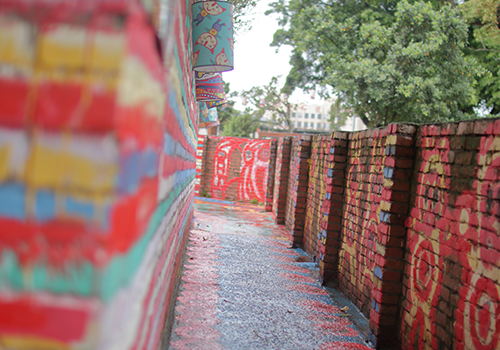
In the olden times, in Nantun District, Taichung in Taiwan was a beautiful village with more than 1,200 homes where former soldiers resided. These homes were built by the government to provide temporary accommodation to soldiers. Over time, everyone who resided in the village moved or passed away and Huang Yung-Fu, a former soldier, was the only resident. It came as a shock to him when the government decided to knock down the village and build a more modern apartment complex instead.
Out of sheer boredom, he began painting a bird inside his home and his artwork grew from there. He single-handedly transformed the drab huts into a striking art museum, painting every blank surface. Over the years his colourful artwork comprising of animals, birds and people spread over the remaining houses in the village. Rooflines, walls and pathways became canvases for multi-coloured Chinese characters and figurative motifs.
The local university students discovered Huang's work and campaigned to save the village. Huang clicked a few photos of the village and began a fundraising campaign and petition to save the place from destruction. Authorities got involved and eventually agreed that it should be preserved and become a designated cultural area.
Today, Huang is affectionately known as "Rainbow Grandpa" owing to his positive, colourful and creative personality. The village has earned the name of the Rainbow Village. It is a popular tourist attraction, along with the nearby Art Street attracting more than a million visitors every year, mostly from Asia.
This village is featured on the local tourism board's list of attractions to see around Taichung. It tops the list of most "Instagrammable" places in the region. It is like walking into a life-size storybook with surrealist prints like the drawing of a cat wearing a hat, perched on a ledge. There is also a drawing of a laughing tiger leaping from a wall and a red dolphin jumping over the moon. It is inspiring to see how Huang Yung-Fu used his art to turn the village into a visual treat for the senses. So, if you are planning a trip to Taiwan, you must visit this place. It, in fact, is located outside of Taichung City, not in the city centre yet it is easily accessible given its popularity amongst the tourists.